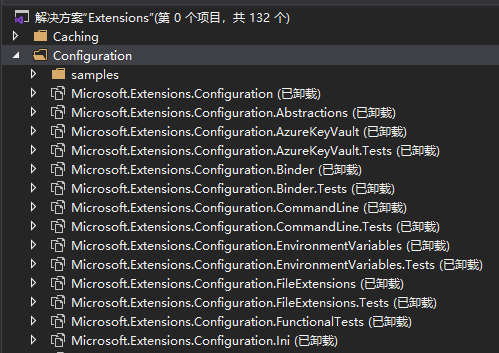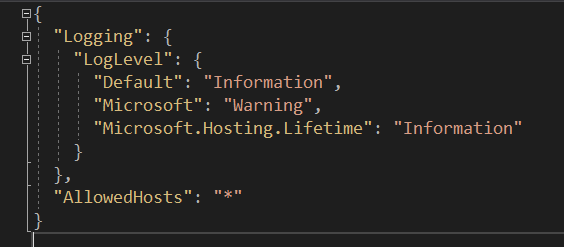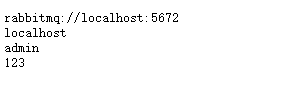这篇文章主要讲解了“.Net Core3.0 配置Configuration的方法”,文中的讲解内容简单清晰,易于学习与理解,下面请大家跟着小编的思路慢慢深入,一起来研究和学习“.Net Core3.0 配置Configuration的方法”吧!
准备
.NET core和.NET项目配置上有了很大的改变,支持的也更加丰富了比如命令行,环境变量,内存中.NET对象,设置文件等等。.NET项目我们常常把配置信息放到webConfig 或者appConfig中。配置相关的源码https://github.com/aspnet/Extensions;如果打开源码项目如果遇到以下错误,未遇到直接跳过。

错误提示:error : The project file cannot be opened by the project system, because it is missing some critical imports or the referenced SDK cannot be found. Detailed Information:
解决办法:查看本地安装的sdk 与 global.json中制定的版本是否一致:然后修改即可

开始
新建个Asp.net Core web应用程序系统默认创建了appsettings.json ;在应用启动生成主机时调用CreateDefaultBuilder方法,默认会加载appsettings.json。代码如下:
public static IHostBuilder CreateDefaultBuilder(string[] args)
{
var builder = new HostBuilder();
builder.UseContentRoot(Directory.GetCurrentDirectory());
builder.ConfigureHostConfiguration(config =>
{
config.AddEnvironmentVariables(prefix: "DOTNET_");
if (args != null)
{
config.AddCommandLine(args);
}
});
builder.ConfigureAppConfiguration((hostingContext, config) =>
{
var env = hostingContext.HostingEnvironment;
config.AddJsonFile("appsettings.json", optional: true, reloadOnChange: true)
.AddJsonFile($"appsettings.{env.EnvironmentName}.json", optional: true, reloadOnChange: true);
if (env.IsDevelopment() && !string.IsNullOrEmpty(env.ApplicationName))
{
var appAssembly = Assembly.Load(new AssemblyName(env.ApplicationName));
if (appAssembly != null)
{
config.AddUserSecrets(appAssembly, optional: true);
}
}利用GetValue,GetSection,GetChildren读取appsettings.json 键值对 。我们打开appsettings.json文件:

将文件读入配置时,会创建一下唯一的分层健来保存配置值:
Logging:LogLevel:Default
Logging:LogLevel:System
Logging:LogLevel:Microsoft
Logging:LogLevel:Microsoft.Hosting.Lifetime
AllowedHosts
var jsonValue = $"AllowedHosts:{_config["AllowedHosts"]}"+ "\r\n";
jsonValue += "Logging:LogLevel:Default:" + _config.GetValue<string>("Logging:LogLevel:Default")+ "\r\n";
//GetSection 返回IConfigurationSection;如果未匹配到 返回null
//jsonValue += "---" + _config.GetSection("Logging:LogLevel:System");
jsonValue += "Logging:LogLevel:System:" + _config.GetSection("Logging:LogLevel:System").Value+ "\r\n\n";
var logSection = _config.GetSection("Logging:LogLevel");
var configurationSections = logSection.GetChildren();
foreach (var sections in configurationSections)
{
jsonValue += $"{sections.Path}:{sections.Value}";
jsonValue += "\r\n";
}
jsonValue += "\r\n";
配置指定json文件绑定至类
新建一个json文件-AAAppSettings.json
{
"AA": {
"RabbitMqHostUrl": "rabbitmq://localhost:5672",
"RabbitMqHostName": "localhost",
"RabbitMqUserName": "admin",
"RabbitMqPassword": "123"
}
}使用ConfigureAppConfiguration方法配置指定的json文件
public static IHostBuilder CreateHostBuilder(string[] args) =>
Host.CreateDefaultBuilder(args)
.ConfigureAppConfiguration((hostingContext, config) =>
{
config.SetBasePath(Directory.GetCurrentDirectory());
config.AddJsonFile("AAAppSettings.json", optional: true, reloadOnChange: true);
})使用bind方法绑定到新建的类上如:
public partial class AAConfig
{
public string RabbitMqHostUrl { get; set; }
public string RabbitMqHostName { get; set; }
public string RabbitMqUserName { get; set; }
public string RabbitMqPassword { get; set; }
}var aaConfig = new AAConfig();
_config.GetSection("AA").Bind(aaConfig);
jsonValue += aaConfig.RabbitMqHostUrl + "\r\n";
jsonValue += aaConfig.RabbitMqHostName + "\r\n";
jsonValue += aaConfig.RabbitMqUserName + "\r\n";
jsonValue += aaConfig.RabbitMqPassword + "\r\n";
return jsonValue;运行输出:

感谢各位的阅读,以上就是“.Net Core3.0 配置Configuration的方法”的内容了,经过本文的学习后,相信大家对.Net Core3.0 配置Configuration的方法这一问题有了更深刻的体会,具体使用情况还需要大家实践验证。这里是亿速云,小编将为大家推送更多相关知识点的文章,欢迎关注!
免责声明:本站发布的内容(图片、视频和文字)以原创、转载和分享为主,文章观点不代表本网站立场,如果涉及侵权请联系站长邮箱:is@yisu.com进行举报,并提供相关证据,一经查实,将立刻删除涉嫌侵权内容。